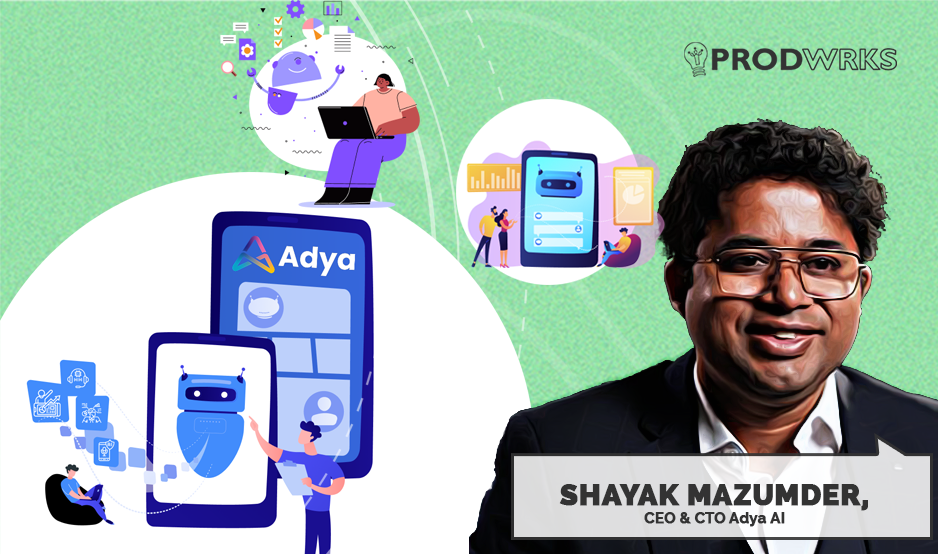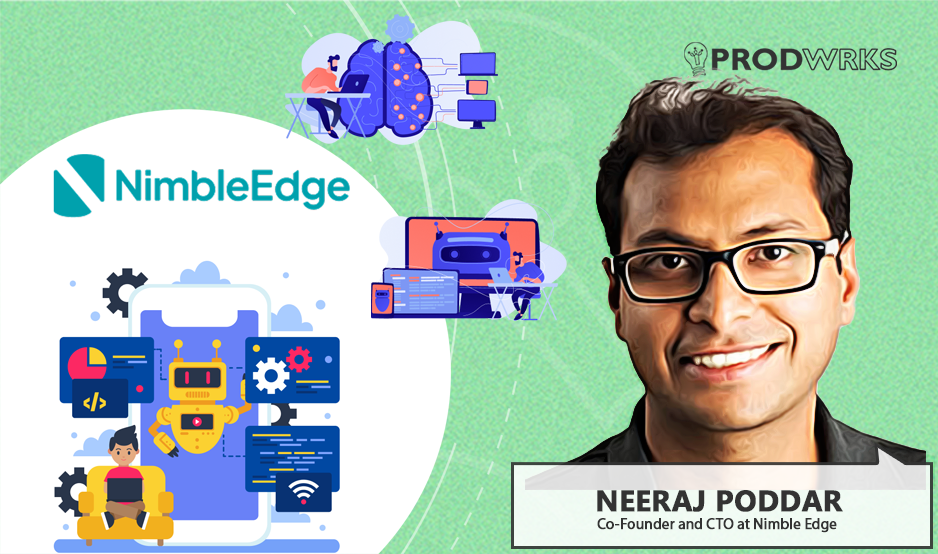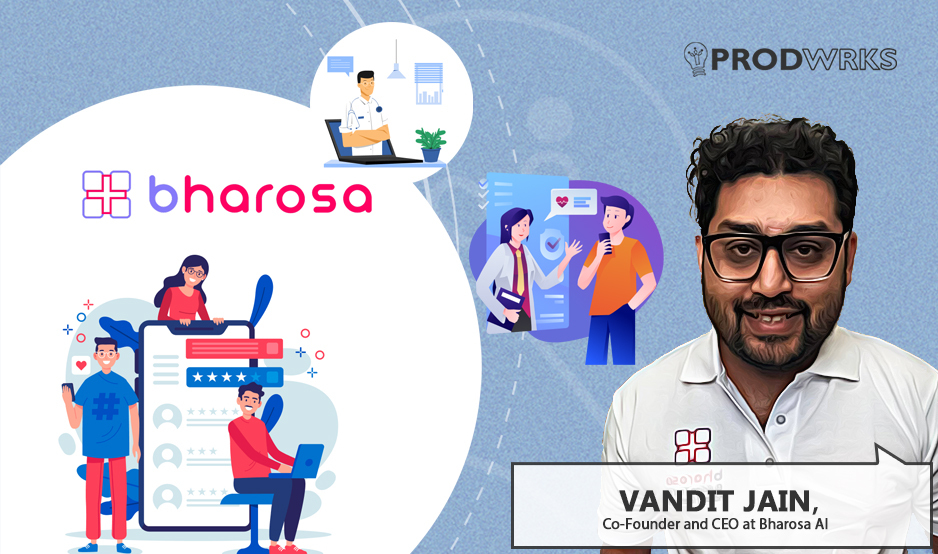
There’s now a common trend I’m observing in tech: if there’s a problem, there’s an AI agent for that. We have agents for sales, for marketing, for writing code, for booking travel. You name it, there’s one for it. In the years 2024 and 2025, we have seen this explosion of single-task specialists. But what if the entire premise is flawed? What if the real, lasting value, or the defensible moat, isn’t in building the agents themselves?
“We will not build agents, because there’s no moat in building agents,” Shayak Mazumder tells me, his voice carrying the conviction of someone who has stared into the AI abyss and seen the other side. This counter-intuitive and bold statement from an ex-Naval officer and serial entrepreneur is the central pillar upon which he is building his new venture, Adya.ai.
Adya.ai, a company that only emerged from stealth in July 2025, has built a comprehensive platform that aims to fundamentally rewire how both businesses and developers interact with artificial intelligence. They’ve raised Rs 10.5 crore in their pre-Series A funding round led by Angel Network’s investors
Their audacious goal is to build an “AI that builds AI,” democratizing the creation of complex, multi-agent systems and super agents that, until now, have been the exclusive domain of Silicon Valley’s tech titans.
Shayak’s vision is to level the playing field, turning every small business owner into a sophisticated AI user and every student into a potent AI developer. He explains to Team ProdWrks how he is building this vision with Adya.ai
Fitsol is Anand’s Personal Mission for a Net-Zero Future
Shayak Mazumder, who serves as the Founder, CEO, and CTO of Adya, is not your typical tech founder. His journey includes a stint as a nuclear, biological, and chemical warfare specialist in the Indian Navy and a subsequent MBA from INSEAD. This eclectic background has forged a no-nonsense mindset that is relentlessly focused on systems, efficiency, and cutting through noise to solve the core problem.
Founded in 2023 with co-founders Archana Shah and Angad Ahluwalia, Adya was born from Shayak’s deep-seated frustration with the state of AI development in India. Shayak recalls, OpenAI CEO’s infamous comment suggesting Indian startups couldn’t compete in building foundational models.
“It kind of pissed us off,” he says. “We were like, ‘Teek hai, you know, we can't build another OpenAI. But we can definitely try to build our own models.’”
This provocation was the catalyst. He and his team, running a small research lab on the side, decided to take on the challenge. They secured credits from Microsoft and began an audacious experiment.
Using a technique called distillation, which was not widely understood at the time, they used OpenAI’s powerful GPT-4 as a “teacher model” to train a smaller, open-source Llama model. The result was astonishing.
The new model, which they christened ‘Adya Deep Intelligence’ (ADI), beat its teacher, GPT-4, by a staggering 21% on OpenAI’s own evaluation benchmark, OpenEval.
“We were also very surprised, because nobody knew at the time that this was doable. This was mid-2023, a full nine months before DeepSeek made headlines.”
Building Better AI Models
After a month-long immersion, Shayak and his team emerged with a clarified vision. They decided NOT to build a suite of AI agents for businesses, which was the obvious, well-trodden path at the time.
Shayak saw the flaw in that logic. “There’s no moat in building agents,” he reiterates. An agent is a feature, and in the world of AI, features are becoming commodities at a breathtaking pace.
Instead, he identified two fundamental, intertwined problems:
Instead, he identified two fundamental, intertwined problems:
1. Businesses have problems they think AI can solve, but they don’t know how to use AI to solve them. The landscape is too vast, too complex.
2. Developers want to build with AI, but the tooling is a fragmented nightmare. Building a sophisticated AI application requires stitching together dozens of disparate tools: one for workflows (like N8N), another for multi-agent systems (like LangChain or CrewAI, which he notes “breaks after five or six agents”), yet another for UI (like Lovable), and a separate cloud provider for deployment. The process is a six-month, vendor-locked-in ordeal.
“You have to build an AI that builds AI. Because if I have 200 libraries, 200 models, 200 external integrations, the number of permutations is such that people will not even be able to understand which one to use for the best results,” Shayak explains.
The Core Innovations: MAN and ALE
Two proprietary breakthroughs form the technical bedrock of Adya’s platform, and they represent a significant leap beyond the current state-of-the-art in agentic AI.
First, they tackled the scaling problem of multi-agent systems. Most current frameworks, like LangChain or CrewAI, rely on a central orchestrator to manage communication between different AI agents.
This orchestrator is a bottleneck. Shaya points out, “It runs out of memory, runs out of ability to do things after six agents. It is, at the same time, looking at six different agents and trying to orchestrate. It becomes very difficult.”
What is a Multi-Agentic Network (MAN)?
Unlike a Multi-Agent System (MAS) with a central controller used by systems like LangChain, Adya’s MAN is decentralised. Shayak describes it as moving from a system to a network. In MAN, each agent is fully autonomous.
It doesn’t wait for instructions from a central hub. Instead, each agent possesses the intelligence to decide for itself whether to:
- Execute a task on its own.
- Propagate the task to another existing agent better suited for the job.
- Create a completely new agent, on the fly, to handle the task.
This architecture removes the single point of failure and allows for the creation of vastly more complex and scalable systems of interacting agents, without the performance degradation seen in conventional models.
The second major problem they solved was trust. LLMs are notoriously prone to “hallucination” (making things up) and can be “hijacked” by malicious prompts. For an enterprise to trust an AI agent with critical business processes, this is a non-starter. Adya’s answer is the Adaptive Learning Protocol (ALE).
What is the Adaptive Learning Protocol (ALE)?
ALE is a system designed to make AI agents reliable and secure by hard-coding business rules. Instead of an LLM making subjective decisions in real-time, ALE creates a deterministic rule engine.
The process is as follows:
- A business uploads all its rules, documents, and processes into the system.
- Adya uses a specialized language to convert these human-language rules into immutable mathematical proofs (e.g., A + B = C).
- These proofs are stored as canonical rules in a Business Rule Management System (BRMS).
In “runtime”, when an LLM-powered agent encounters a decision point, it doesn’t try to “think” about the right answer. It simply queries the BRMS, which provides a definitive yes/no answer based on the pre-approved canonical rules.
This effectively removes hallucination and prompt-hijacking from the equation for core business logic, making the agents trustworthy for enterprise use.
Adya is a Packaged AI Factory
1. Agent Studio: This is the core workspace where developers can build individual agents and complex multi-agent workflows using the MAN architecture. It provides access to over 150 AI libraries, 100+ LLMs, and 200+ third-party integrations, all orchestrated by the “AI that builds AI” to recommend the best components for a given task.
2. App Studio: Aiming at UI builders like Lovable, Adya’s App Studio is far more ambitious. Shayak describes it not as a simple app builder, but as a “product team of six agents.” When a user wants to build an application, they interact with a Product Manager agent to define requirements, a Solutions Architect agent to design the system architecture, a Designer agent, a Developer agent, a Tester agent, and a Deployment agent.
This multi-agent team collaborates to build a complete, enterprise-grade application (backend, frontend, and integrations included) in minutes, not just a simple frontend mock-up.
3. Model Studio: Productizing their own origin story, this studio allows anyone to take an open-source model, fine-tune it with their own data using various techniques, and create a custom, domain-specific model.
4. Cloud Studio & GPU as a Service: To combat vendor lock-in and the global GPU shortage, Adya allows one-click deployment to any major cloud (GCP, Azure, AWS) and offers its own “GPU as a Service,” aggregating capacity from over 40 data centers to provide affordable, on-demand access to the computing power needed for AI development.
5. The Marketplace: The final piece of the puzzle is the marketplace. “Not only did I give you Android to build, I also gave you the Play Store to put it on and make money,” Shayak says.
Any agent, model, or app built on the Vanij platform can be listed on the marketplace. This creates a powerful network effect, where developers are incentivized not only to build for their own needs but to create solutions for the entire ecosystem, which in turn attracts more business users to the platform.
From Building Platforms to Products and Super Agents
Having built this powerful engine, Adya set out to prove its capabilities. They used their own platform to build a series of products, each demonstrating a different level of abstraction.
First came the AI Employees: seven pre-built, state-of-the-art agents for Sales, Marketing, Customer Support, Research, Data Analysis, Calling, and Recruitment. These are targeted at mid-sized businesses (20-100 employees) that have defined departments and need customizable, powerful solutions.
“Our recruiter agent can do the full recruitment,” Shayak notes. “Some of the recruiters who came and saw that were like, ‘Why are you putting us out of business?’”
But this was just a stepping stone. This year, observing the rise of conversational powerhouses like Perplexity, Adya decided to build the ultimate expression of its platform: a Super Agent.
“The platform has everything. It can build hundreds of workflows by itself. It has got all the agents, it has got all the integrations. It has browser use. Why would we not build a super agent and take away all the complexity and hide it behind a plain, white screen?”
In just two weeks, a timeframe that would be unthinkable for any other company, Shayak shares that they built their own “super agent.” This is the product for the smallest of businesses, the saree seller, the pharmacist, the pickle maker. This user doesn’t need to know about agents or workflows.
They just talk to it. “File my taxes.” “Find out the latest trends on Instagram for my business and create five posts.” “Order more inventory for my product.” The Super Agent understands the intent and orchestrates the vast network of capabilities on the Adya platform to get the job done.
This, Shayak argues, is the future. And it’s why he believes individual agents have no moat.
“ChatGPT doesn't have all our capabilities. They don't have the Multi-Agentic Network, the Adaptive Learning Protocol, the 150 libraries, the 200 integrations. They're building one workflow at a time.”
“For instance, Perplexity can build Comet. But what they can't do is they can't let you build a Comet. We can give you a platform where you can build your own super agent,” he says.
A New Operating System for Humanity
With a team of 55, Adya is moving at a blistering pace. They already have 50 mid-sized businesses using their agents, 21 enterprises building vertical solutions, and over 2,000 developers on the platform.
Their go-to-market strategy is as ambitious as their technology. They are partnering with large organizations that serve lakhs of small businesses to distribute the Super Agent, and they are pursuing an even grander vision for the platform.
“We want to give our platform to 10 lakh students for free. If you're below 26, you're not employable because AI knows more than you. If you're above 46, you're not employable because you're not able to adapt fast enough. AI can solve their problems.”
By putting the power to create AI into the hands of the next generation, he hopes to equip them for a future where intelligence is no longer the key differentiator. “Everybody’s got a 300 IQ sitting in their phone. We are now moving from being human 1.0 to human 2.0.”
This is the ultimate mission of Adya, a name that means ‘the origin’ or the goddess Durga. It’s a mission to provide the foundational tools for this new era. In a world awash with AI applications, Adya.ai is taking the audacious, and perhaps visionary, step of building the operating system for intelligence itself.
They are betting that the most enduring moat isn’t a clever agent or a single killer app, but the platform that empowers millions to build their own AI. And in doing so, they may just be building the future.



